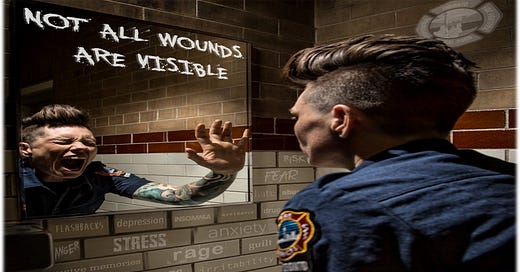The Intersection of Tradition, Leadership, and Evolving Education in the Fire Service
And Other Sectors
(Photo Credit: Myscha Bahr)
When we look back at the history of leadership and education within the fire service, it's clear that certain practices have been deeply rooted for generations. The rigorous training programs that prepare us for the field, however, didn't always exist. Back in the day, mental health concerns, especially issues like PTSD, were hardly acknowledged, if at all. The focus was on getting the job done, and the chain of command was the backbone of operations.
The Union, which now plays a crucial role in advocating for our well-being, hadn't been established yet. It was the department's management that called all the shots, ensuring control through a structured hierarchy. In this male-dominated environment, the culture thrived on order, discipline, and tradition—something that worked well to maintain operational efficiency but left little room for innovation or change.
Fast forward to today, as an adjunct faculty member in the post-secondary sector , I find myself navigating a similarly structured environment within the education system. Like the fire department, institutions operate with an established hierarchy and a deeply ingrained network. I feel my influence, given my position, is limited. But that doesn't mean it's non-existent.
Education, historically, has always been about passing down the values, traditions, and knowledge of one generation to the next. This is especially true in the fire service, where certain training aspects remain unchanged for good reasons—they work. Yet, as the world changes, so too must our approach to education and leadership.
From a historical perspective, encouraging critical thinking, and curiosity may have been met with resistance—after all, why fix what isn't broken or why change? But times ARE changing, and so are the needs of our firefighters and students. The challenge lies in introducing such innovative concepts into historically resistant environments like the fire service and academic institutions. We can easily broaden these arguments for a number of sectors and industries that remain entrenched in their tradition and archaic strategies.
As leaders and educators, we must ask ourselves: How can we bridge the gap between tradition and innovation? How can we respect the structures that have served us well while also paving the way for new ideas that could enhance our well-being and effectiveness on the job?
The answer isn't simple, but it's necessary. It requires a delicate balance of honoring our past while boldly stepping into the future, ensuring that the next generation of firefighters is not only prepared for the physical demands of the job but also equipped with the psychological tools to thrive.





